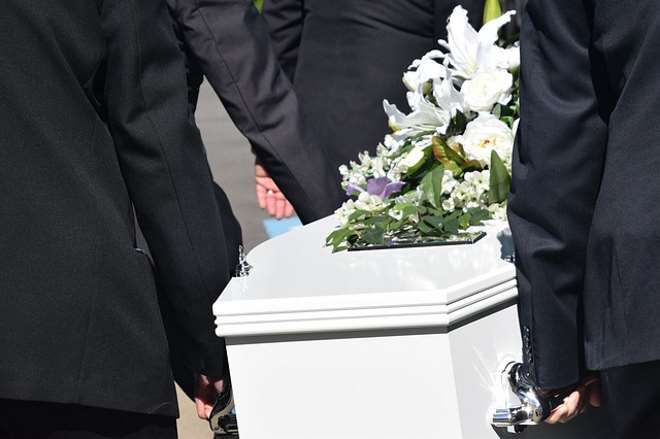How Much Does a Funeral Cost in USA 2025? Explore Important Details
Planning for end-of-life expenses requires understanding the various costs involved in funeral services across the United States. From traditional burial ceremonies to cremation options, funeral expenses can vary significantly based on location, service choices, and provider selection. This comprehensive guide breaks down the typical costs associated with different funeral arrangements, helping families make informed decisions during difficult times while managing their financial considerations effectively.

Funeral costs in the United States continue to rise, making it essential for families to understand the financial implications of different service options. The average funeral expense encompasses multiple components, from basic service fees to additional memorial arrangements, creating a complex pricing structure that varies significantly across regions and providers.
Understanding Traditional Funeral Costs
Traditional funeral services typically include several core components that contribute to the overall expense. The basic service fee covers funeral director coordination, staff assistance, and facility usage, generally ranging from $2,000 to $3,500. Embalming services add approximately $500 to $800, while a casket represents one of the largest expenses, with prices spanning from $1,000 for basic models to $10,000 or more for premium options. Cemetery plot costs vary dramatically by location, from $1,000 in rural areas to $5,000 or higher in metropolitan regions. Burial vault requirements, mandated by most cemeteries, add another $1,000 to $2,500 to the total cost.
Cremation Costs Compared to Traditional Burial
Cremation has become increasingly popular due to its lower cost structure compared to traditional burial. Direct cremation, the most economical option, typically costs between $1,000 and $3,000, including basic services and the cremation process itself. Cremation with memorial services ranges from $3,000 to $6,000, depending on venue selection and additional arrangements. Traditional burial costs generally exceed cremation expenses by $3,000 to $8,000, primarily due to casket, cemetery plot, and burial vault requirements. However, cremation still involves optional expenses such as urns ($200 to $2,000), memorial services, and columbarium niches for permanent placement.
Funeral Home Services Options
Funeral homes offer various service packages to accommodate different preferences and budgets. Full-service arrangements include comprehensive coordination, facility usage, transportation, and staff assistance, typically costing $7,000 to $12,000 for traditional burial services. Limited service options allow families to select specific components while handling other arrangements independently, reducing costs by 20 to 40 percent. Direct burial services, excluding viewing or ceremony components, range from $2,500 to $5,000. Many funeral homes also provide pre-planning services, allowing individuals to lock in current prices and specify their preferences in advance.
| Service Type | Provider Example | Cost Estimation |
|---|---|---|
| Traditional Burial | Dignity Memorial | $8,000 - $15,000 |
| Direct Cremation | Neptune Society | $1,500 - $3,500 |
| Cremation with Service | Service Corporation International | $4,000 - $8,000 |
| Direct Burial | Local Independent Homes | $3,000 - $6,000 |
| Green Burial | Green Burial Council Members | $2,500 - $5,500 |
Prices, rates, or cost estimates mentioned in this article are based on the latest available information but may change over time. Independent research is advised before making financial decisions.
Regional variations significantly impact funeral costs across the United States. Metropolitan areas like New York, Los Angeles, and San Francisco typically experience costs 30 to 50 percent higher than national averages due to increased real estate values and operational expenses. Rural communities often offer more affordable options, though service variety may be limited. State regulations also influence pricing, with some states requiring specific licensing or facility standards that affect overall costs.
Additional considerations include optional services that can substantially increase total expenses. Transportation for out-of-state arrangements, specialty caskets or urns, elaborate floral arrangements, catering for memorial gatherings, and professional photography or videography services all contribute to final costs. Some families also choose memorial websites, custom monuments, or charitable donations in lieu of flowers, which require separate budget planning.
Insurance options can help manage funeral expenses through pre-need insurance policies, burial insurance, or life insurance designations. Veterans may qualify for burial benefits through the Department of Veterans Affairs, including cemetery plots, markers, and burial allowances. Social Security provides a modest death benefit, while some employers offer bereavement assistance or life insurance coverage that can offset funeral costs.
Planning ahead allows families to make thoughtful decisions without time pressure or emotional stress. Comparing prices among multiple providers, understanding exactly what services are included in quoted prices, and considering alternative arrangements like home funerals or green burial options can significantly impact total expenses. Many funeral homes are required to provide itemized price lists, enabling families to make informed comparisons and select services that align with their budget and preferences.




